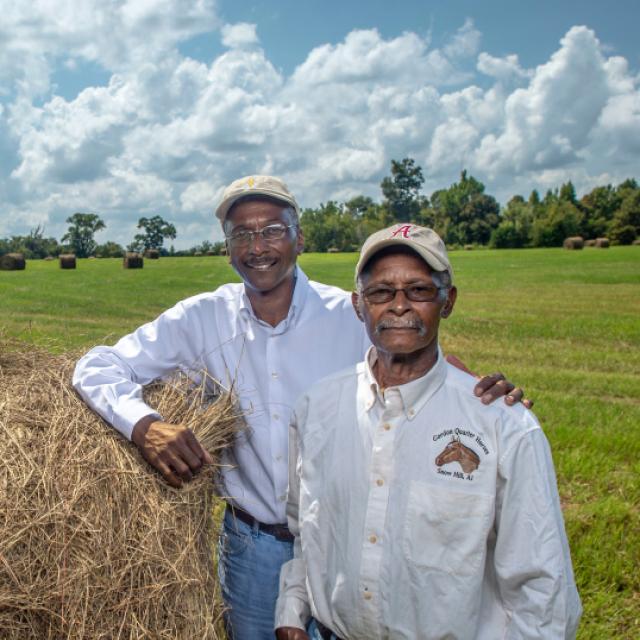Notice


The Mississippi River Basin Healthy Watershed Initiative (MRBI) is accelerating voluntary, on-farm conservation investments and focused water quality monitoring and assessment resources in the Mississippi River watershed.

Mississippi River Basin Healthy Watersheds Initiative (MRBI)
Mississippi River Basin Healthy Watersheds Initiative (MRBI) targeted conservation efforts that require upfront planning and assessment prior to receiving financial assistance. Only HUC12 watersheds that fall within the MRBI Identified HUC8 Focus Watersheds for Minnesota are eligible to apply. More than one HUC12 may be included in a project IF the HUC12s are contiguous, have similar pollutant concerns and characteristics, and will have the same goals, objectives and management strategies. If you do not fall within a focus watershed, please consider submitting a proposal for NWQI.
MRBI watershed activities are guided by multi-year implementation plans that document annual targets for conservation activity and the related financial assistance need. All MRBI watersheds must have a watershed assessment meeting NRCS guidance. Priority watersheds that do not fully meet the required level of planning as described in Attachment B below may be proposed for a “planning phase”.
The NRCS State Conservationist for Minnesota will accept proposals for MRBI watershed activities. The activities may include implementation or readiness. The watershed implementation proposals need to meet or clearly state how they will meet criteria outlined in Attachment B. Watershed readiness proposals need to clearly state how the work will achieve the criteria in Attachment B. Proposals where local NRCS and partners clearly set goals and outline collaboratively how they will carry out plan of action for implementation or the planning phase proposal will have highest consideration through the watershed selection process. This includes proposals that can provide proof of producer willingness and readiness to adopt needed conservation activities and partners ability to provide technical assistance for implementation.
To write a watershed proposal for either a planning or new MRBI watershed fill out the template within Attachment D – NWQI/MRBI Watershed Assessment Template and Attachment C – Watershed Assessment Checklist. The proposal also needs to address the selection criteria provided in Attachment B as part of the submission. Proposals may be submitted with one or groupings of HUC12’s. The proposals must be submitted to Keith Kloubec at keith.kloubec@usda.gov or Courtney Cheever at courtney.cheever@usda.gov. The Watershed Subcommittee of the Minnesota State Technical Committee (MSTC) will review and rank proposals according to the MSTC Watershed Selection Criteria; as well as Attachment A and provide a recommendation to the MSTC and State Conservationist on which, proposals to submit to the National Office.
MRBI Success Stories
Learn more about the impact of MRBI through our success stories.
A Recipe for Success: Improving Water Quality in the Indian Creek Watershed
Voluntary conservation efforts focused in small watersheds can yield big results for locally important waters. See how NRCS, landowners, and partners are working together to improve water quality in Illinois.
Learn MoreStepping Up for a Cleaner Mississippi River
Meet Iowa's 2015 Soil Conservation Farmer of the Year Award recipient, Tim Smith, one of the many conservation farmers participating in a USDA program designed to reduce nutrient and sediment loading in the Mississippi River Basin.
Learn MoreReady to get started?
Contact your local service center to start your application.
How to Get Assistance
Do you farm or ranch and want to make improvements to the land that you own or lease?
Natural Resources Conservation Service offers technical and financial assistance to help farmers, ranchers and forest landowners.

To get started with NRCS, we recommend you stop by your local NRCS field office. We’ll discuss your vision for your land.
NRCS provides landowners with free technical assistance, or advice, for their land. Common technical assistance includes: resource assessment, practice design and resource monitoring. Your conservation planner will help you determine if financial assistance is right for you.
We’ll walk you through the application process. To get started on applying for financial assistance, we’ll work with you:
- To fill out an AD 1026, which ensures a conservation plan is in place before lands with highly erodible soils are farmed. It also ensures that identified wetland areas are protected.
- To meet other eligibility certifications.
Once complete, we’ll work with you on the application, or CPA 1200.
Applications for most programs are accepted on a continuous basis, but they’re considered for funding in different ranking periods. Be sure to ask your local NRCS district conservationist about the deadline for the ranking period to ensure you turn in your application in time.
As part of the application process, we’ll check to see if you are eligible. To do this, you’ll need to bring:
- An official tax ID (Social Security number or an employer ID)
- A property deed or lease agreement to show you have control of the property; and
- A farm number.
If you don’t have a farm number, you can get one from USDA’s Farm Service Agency. Typically, the local FSA office is located in the same building as the local NRCS office. You only need a farm number if you’re interested in financial assistance.
NRCS will take a look at the applications and rank them according to local resource concerns, the amount of conservation benefits the work will provide and the needs of applicants. View Application Ranking Dates by State.
If you’re selected, you can choose whether to sign the contract for the work to be done.
Once you sign the contract, you’ll be provided standards and specifications for completing the practice or practices, and then you will have a specified amount of time to implement. Once the work is implemented and inspected, you’ll be paid the rate of compensation for the work if it meets NRCS standards and specifications.

